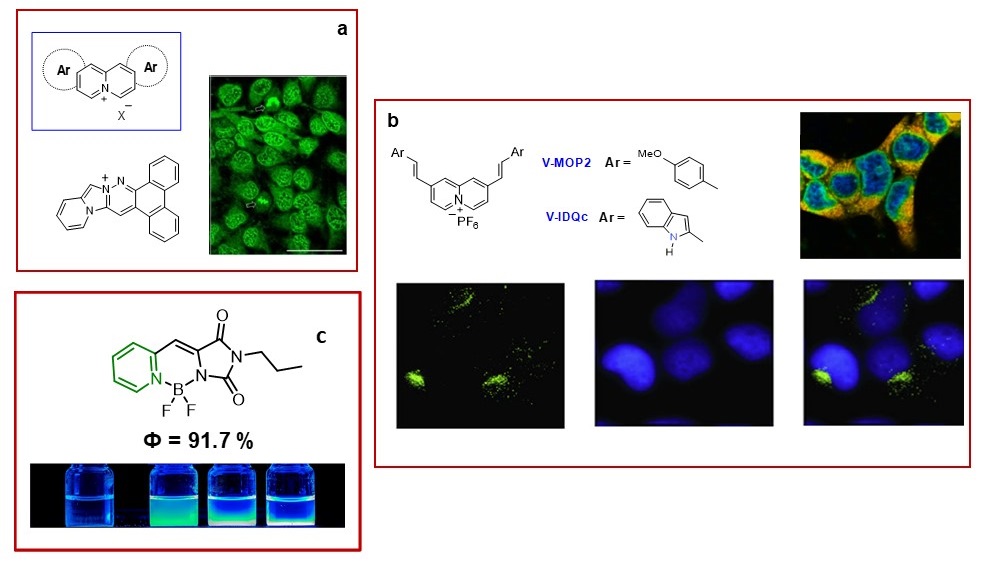Development of new agents for cell staining and bioimaging
This line began by addressing the design and synthesis of new chromophores that could be selective DNA intercalants. This type of molecules that exhibit the ability to insert themselves between the base pairs of this biomolecule show, in some cases, great interest as antiproliferative agents and potential application as antitumor agents. Another possible application lies in using them to generate DNA probes and/or agents for cell staining. This requires high fluorescence, permeability through the cell membrane, low or no toxicity, stability against long periods of illumination and absorption at wavelengths higher than UV. In this line we have developed DNA probes based on polycyclic heteroaromatic cations, analogues of the chromophore of the green fluorescent protein (GFP) and, more recently, dyes based on upconversion processes exploring systems for multiphoton absorption (2PA) based on push-pull chromophores with non-linear optical properties (NLO).

a) General structure of DNA probes (above) and staining of HeLa cells with a representative compound, b) Image of HEK cells stained with the compound V-MOP2 and confocal microscopy images of V-IDQc (green) and DAPI (blue) in U2OS cells, c) Analogue with restricted conformation of GFP.
Recent publications:
